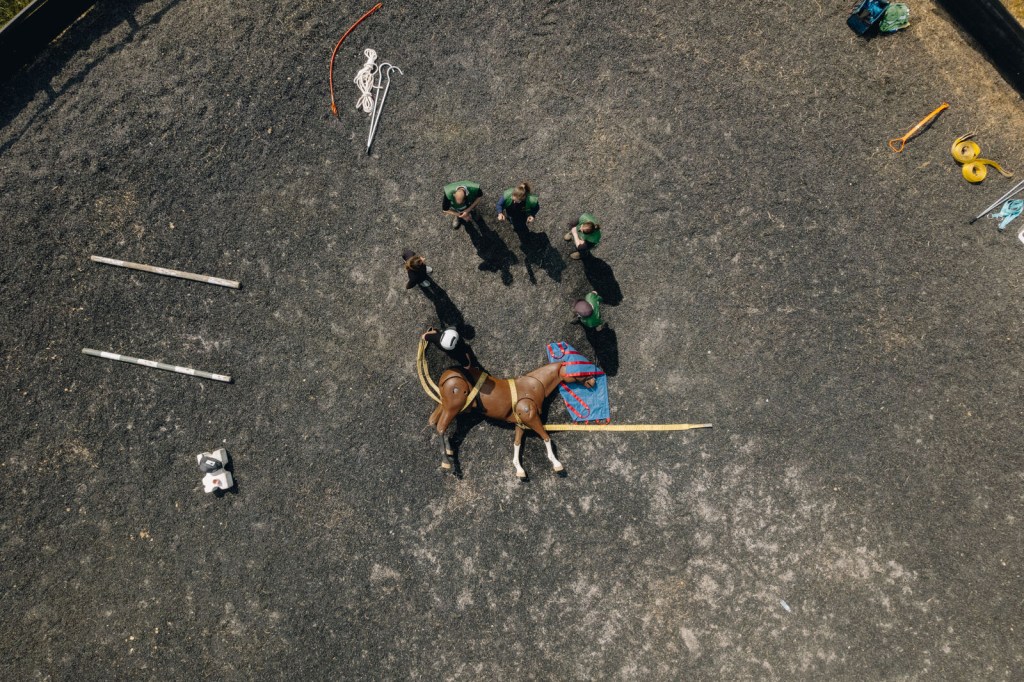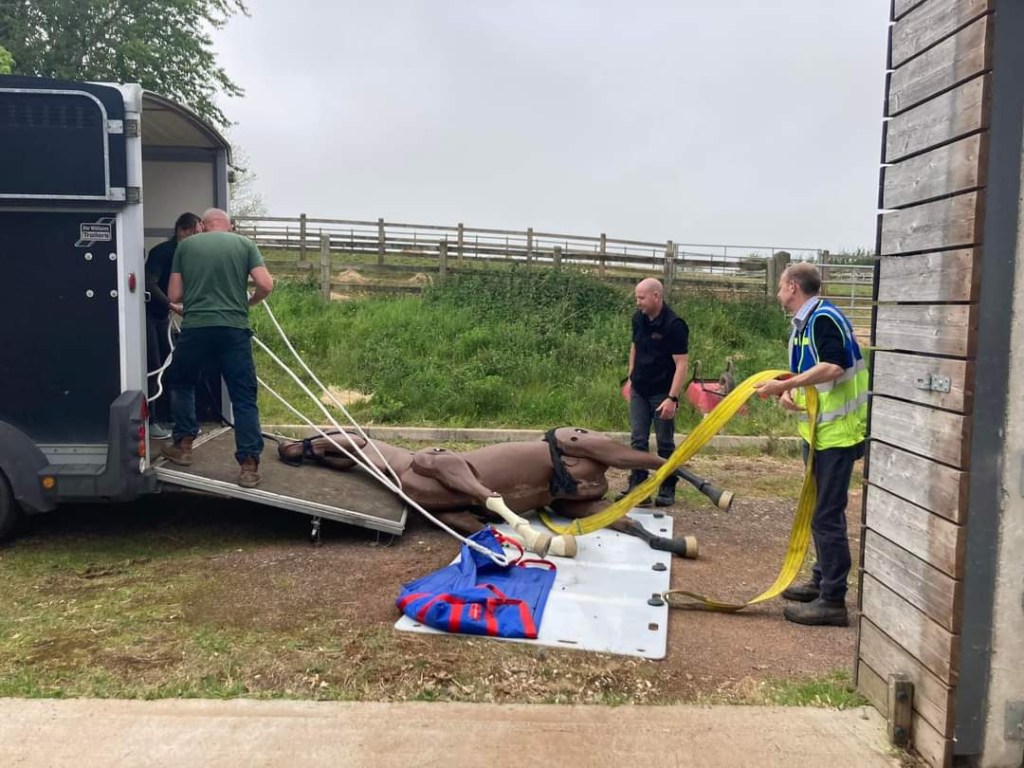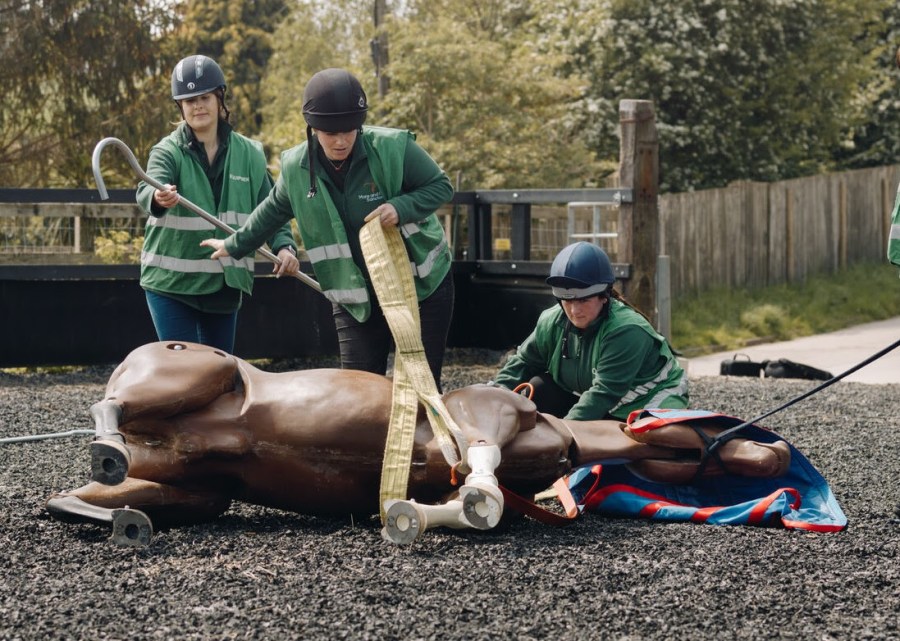An unusual piece of lifesaving training kit has been used for the first time at an equine sanctuary to teach best practice in complex animal rescues. Supporters of Southwest-based The Mare and Foal Sanctuary donated more than £9,000 for a horse mannequin which is designed to train emergency response teams.
‘Max’ is a life-size equine mannequin which can be used to demonstrate the safest way to recover large animals from trenches, ditches and cliffs, and from water and mud entrapment. The mannequin was engineered by specialist UK company Resquip and is a life-like model with realistic joint articulation and muscle definition.
The Mare and Foal Sanctuary worked in partnership with The British Animal Rescue & Trauma Care Association (BARTA) to offer the first in what is hoped will be a series of collaborative training days sharing best practice.

Delegates from the Sanctuary, Tor Equine and Kernow Farm & Equine Vets were able to take part in a series of practical rescue scenarios, coached by trainers Nicky Housby-Skeggs, Vet Director at the Horse Trust and Ady Knight a fireman experienced in large animal rescue.
“The first training session was an opportunity for members of the Sanctuary’s Welfare Outreach and Advice team and local vets to learn basic rescue techniques,” said Syra Bowden, The Mare and Foal Sanctuary’s Head of Equine Welfare. “We feel it was a big success because it gave us the chance to practice potentially life-saving manoeuvres in a safe environment.
“Rescues involving large animals like horses and ponies are dangerous and can result in the death of the equine and injury to rescue team members, so it’s important for us to rehearse practical, realistic scenarios and to share that knowledge. Max had a busy day, being used for sliding, pulling and rolling techniques after getting himself stuck in the stocks and then the trailer.

“We’re so grateful to our supporters for funding this kit and are certain their generosity will help to save equine lives in the future. We plan to work more with BARTA in coming months and to invite other emergency teams from right across the Southwest to benefit from this training.
“Many Category 1 responders have very little experience of working with equines, so we are keen to share our professional knowledge for the best outcome in critical rescue situations.”










